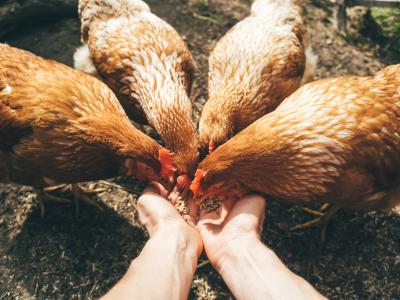Following sporadic detections of a Eurasian H5N5 avian influenza in Canadian wild birds, officials reported the virus for the first time in mammals—raccoons found dead on Prince Edward Island.
In other developments, the United States reported several more detections involving H5N1 in mammals, and H5N1 outbreaks continue in wild birds and poultry on different continents.
Raccoon deaths follow wild bird detections
The raccoons were found in early April near Charlottetown, the capital of Prince Edward Island, which is located north of Nova Scotia in the Gulf of St. Lawrence, according to a notification from the World Organization for Animal Health (WOAH).
The fully Eurasian H5N5 virus had been found earlier in wild birds on Prince Edward Island and New Brunswick, according to the report.
In an earlier risk assessment on intensifying spread of avian flu outbreaks in wild birds and poultry, WOAH warned that unprecedented genetic variability of avian flu subtypes in birds is creating an epidemiologically challenging landscape. "H5N1, H5N3, H5N4, H5N5, H5N6, or H5N8 are the subtypes currently circulating in poultry and wild bird populations across the world," it said.
More H5N1 in US mammals
In an update, the US Department of Agriculture (USDA) Animal and Plant Health Inspection Service (APHIS) reported 11 more H5N1 detections in mammals, bringing the total since April 2022 to 191. The animals that tested positive are from eight states. One was a black bear from Minnesota's Cass County, located in the north-central part of the state.
Other states reporting cases include New York (red foxes), California (raccoon, mountain lion, Utah (mountain lion), Pennsylvania (red fox), Maine (red fox), Oregon (red fox), and Colorado (skunk).
Health officials continue to monitor H5N1 spillovers from birds to animals, because the currently circulating clade in multiple world regions has a mutation that makes it more easily recognized by mammalian airway cells, including those of humans. These factors make it a potential pandemic threat.
Scientists have developed candidate vaccine strains that target H5N1 in case immunization is needed for humans. For example, Japan's health ministry recently announced a plan to stockpile enough H5N1 vaccine for 10 million people, according to a media report.
More global H5N1 detections in birds
In related developments, countries in multiple world regions continue to report detections in wild birds and poultry. In Africa, Guinea reported H5N1 in wild birds—mostly terns and pelicans—at a nature park located on the country's Atlantic shore, according to a WOAH report.
Russia last week reported more H5N1 detections in wild birds from three regions, and the United Kingdom reported H5N1 at another commercial poultry farm, a second affected facility in Lincolnshire.



















